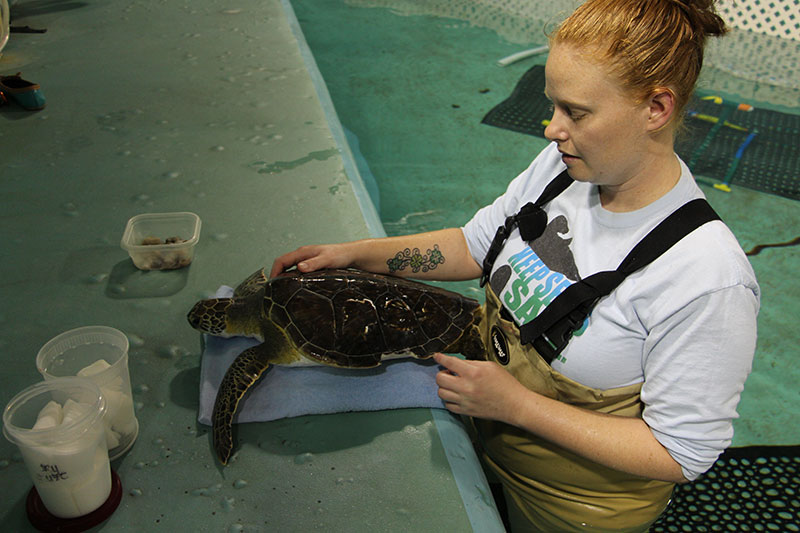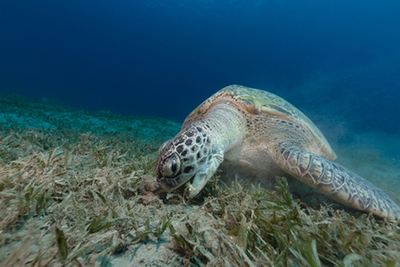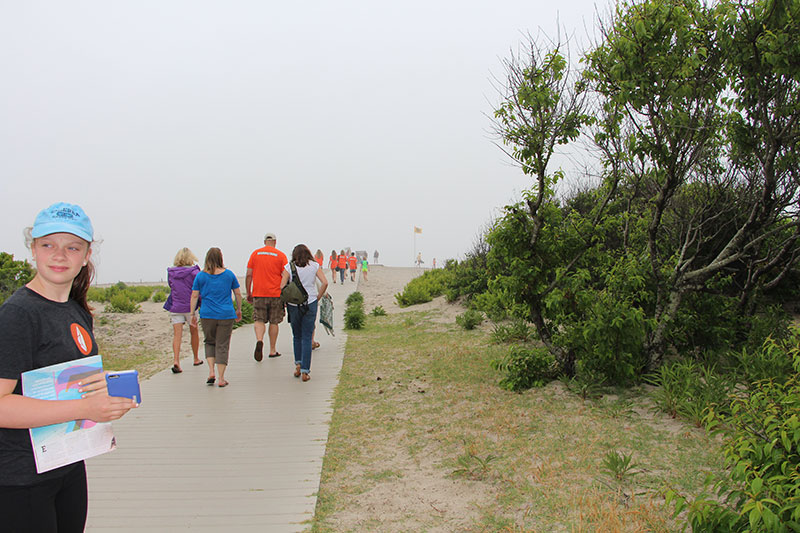Back in May, in preparing an article for the Sea Turtle issue of Leaf Litter, I visited the National Aquarium in Baltimore’s animal rescue facility to interview Amber White. Amber rehabilitates rescued sea turtles.

Amber White points to a rescued turtle’s damaged shell, likely caused by a boat strike
On the day of my visit, Amber was working with two rescued green sea turtles. Both were victims of cold-stunning, a hypothermic reaction that happens in sea turtles when they are suddenly exposed to very cold water for a prolonged period of time. Cold-stunned turtles are not only sick, but their condition makes them lethargic, and more susceptible to threats posed by us humans. And oh, there are threats.

Green sea turtle (Chelonia mydas) eating sea grass
Sea turtles are the most migratory creatures on Earth, and the fact that they have been around for 110 million years (as in…they coexisted with dinosaurs) tells us that these animals know how to adapt and survive. But in the short time we humans have inhabited the planet, sea turtles have suffered dramatic declines.
They die from ingesting our trash, which they mistake for prey; they get entangled in our fishing gear; they are sliced, diced, and smashed by our boats & propellers; they are over harvested and hauled in as by catch; they come ashore to lay eggs only to exhaust themselves trying to hoist their bodies over new mounds of sand from “beach replenishment”; their hatchlings wander off in the wrong direction, mistaking the lights of coastal development for the moon that guides them to the sea….it goes on and on.
Even people who don’t care about a sea turtle’s intrinsic right to exist should care about the fact that when they graze on seagrass beds and dine on sponge, they are helping to maintain critical parts of the food web. And…they eat a crapload of jellyfish. Imagine the impact of uncontrolled populations of jellyfish on your next beach vacation.
Last weekend, I took my daughter to Maryland’s Assateague Island National Seashore to witness the release of those two turtles Amber and the staff at the National Aquarium had rehabilitated.

My daughter (L) joins the crowd heading to watch the release
We humans routinely do such terrible things to the planet, to each other, to other living things. As I watched the Aquarium’s animal rescue staff gently place the rehabilitated turtles on the sand, and as those animals crawled with increasing speed toward the Atlantic, I felt grateful that my daughter could witness the opposite.

To Amber and the animal rescue team at the National Aquarium, and to all of the sea turtle conservation heroes featured in this summer’s Leaf Litter: thank you for your efforts to save and protect these incredible animals. People like you give me hope that sea turtles will live long past humanity’s carelessness.
Further Reading
Meet Assistant Construction Project Team Leader Bryan SullivanMeet Conservation Biologist Nolan Schillerstrom
Get to know Allyson Gibson, Biohabitats Extern
Get to Know Graphic Designer Joey Marshall
Evolution: A New Leadership Team for Biohabitats
More From This Author
Get to know Sarah Emrich, Water Resources EngineerOn The Construction Side Of Restoration Ecology With Matt Koozer
Biohabitats on the Passaic River
Get to know Jeff Payson, Construction Project Team Leader
What if Nature had legal rights?

